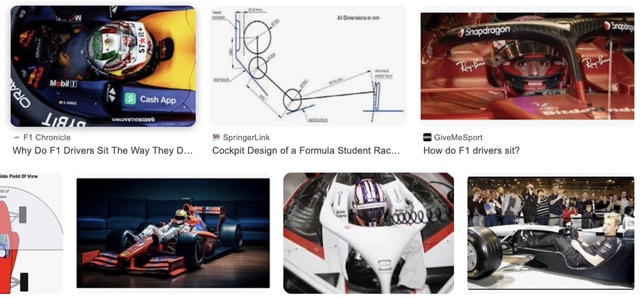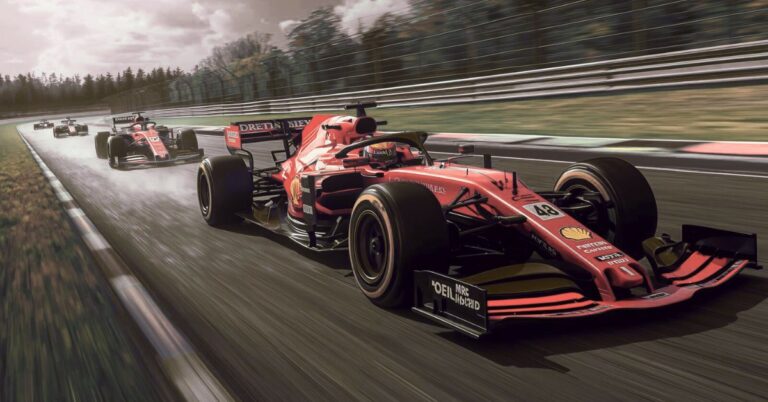The Significance of Ergonomics in Formula 1 Cockpit Design
Formula 1, being the highest class of motorsport, is the place where the most advanced engineering solutions and cutting-edge technology meet people’s endurance to produce high-speed action, which could be hardly compared with any other sport. Moreover, the comfort of the driver inside the car has always been of the utmost importance as no machine will be able to demonstrate its highest performance with a delirious pilot. The design of the cockpit is one of the most important aspects of the ergonomics of an F1 car.

Introduction to Ergonomics in F1:
Ergonomics are very important in Formula 1, a scientific discipline concerned with understanding interactions among humans and other system elements. It is a vital tool that includes designing equipment and systems that fit the human body and its cognitive abilities. For the Formula 1 context, ergonomics is not about comfort, but about optimizing the driver’s interaction with the vehicle to enhance performance and safety efficiency he would be.
Enhancing Performance Through Comfort
The Formula 1 race is known for its blistering speed and razor-sharp reflexes. The rapid accelerations and decelerations induce great G-forces; i.e. centrifugal forces on the driver. All these operations collectively cause the requisite force on the body. The physicality of the event contributes substantially to the demands of the driver. An ergonomically designed cockpit does not only ensure the comfort of the driver. The placement of the steering wheel and pedals is pivotal.
They must be positioned in such a way that the driver can reach them without too many movements. Ergonomics makes sure that the steering and pedals are situated in such a manner that the required movement is minimal. Thereby, the driver can keep his hands on these devices at all moments and respond quickly to any contingencies without having to adjust to his seating arrangement. For such a race where time in milliseconds can decide the outcome of an event, this ergonomic principle can prove to be a critical factor.
A Marriage of Technology and Human Physiology
Advancements in technology have further revolutionized the ergonomic design of Formula 1 cockpits. The integration of biometric sensors in the driver’s gloves or suits provides real-time data on physical parameters such as heart rate, muscle tension, and hydration levels. This information allows engineers to tweak cockpit ergonomics dynamically to suit the driver’s physical condition during a race.
Moreover, the use of simulation and virtual reality (VR) has transformed how ergonomic factors are analyzed and optimized. Engineers can create virtual cockpit environments where drivers can practice and provide feedback, allowing for adjustments before physical prototypes are built. This iterative process ensures that the final cockpit design is as close to perfect as possible.
Customization: One Size Does Not Fit All
No two drivers are the same; thus, the one-size-fits-all approach simply does not work in Formula 1. The physical dimensions and preferences of drivers necessitate a high degree of customization. The adjustable nature of modern cockpits allows teams to tailor each component’s position and orientation to match each driver’s needs perfectly. Apparent in details as specific as the contour of the seat or the inclination of the steering wheel, this customization ensures that the driver’s interaction with the car is as intuitive and comfortable as possible.
Take, for instance, pedal positioning. The distance and angle of the pedals are adjusted to ensure that the driver’s legs don’t cramp during the race. This adjustment directly reduces the risk of muscular fatigue and cramps, common issues that can jeopardize performance and safety. Similarly, the steering wheel, lined with controls and buttons, is designed to offer maximum functionality without compromising ease of use or comfort.
Safety: The Ultimate Priority
Ergonomic design in Formula 1 is aimed not only at enhancing performance but also at ensuring the drivers’ safety. Extremely tight confinement in the cockpit, as well as the high velocity and kinetic energy of any potential collision, mean that ergonomics in design is both a safety constraint and the performance booster. The seats are made to cradle the drivers and provide them with the necessary restraint. Headrests built into the seats prevent cranial injuries, harnesses keep the drivers in place and padded elements of the seat absorb and dissipate the forces of an impact.
Evidently crossing with ergonomics, if not in the safety concept, is the installation of cut-out zones and breakaway structures in the cockpit. These elements guarantee to absorb energy produced by a collision and decrease the force transferred onto the driver. Another detail that revolves around ergonomics is the headrest, which can also be called the Head And Neck Support device. In this instance, the product was designed specifically for comfort and efficiency, which is why it is optimal in terms of shape and material. Overall, safety and ergonomics are inexplicably intertwined as they revolve around the comfort and, ultimately, the purpose of the driver.
Psychological and Cognitive Ergonomics
Beyond physical comfort, the concept of ergonomics in Formula 1 extends to psychological and cognitive aspects. The mental strain on drivers in a race environment is exceptional, with split-second decisions often making the difference between victory and disaster. Ergonomics helps mitigate this strain by creating a user-friendly control interface.
Simplifying the complex arrays of buttons and switches on a driver’s steering wheel needs meticulous planning. Grouping controls intuitively and ensuring that tactile feedback guides the driver are small details that produce significant results. When pressure mounts during a race, the design ensures that drivers do not need to divert attention from the track to operate their controls effectively. Such arrangements help reduce cognitive load, allowing drivers to focus better on their primary task: racing.
Future Outlook: Innovations on the Horizon
As Formula 1 pushes the boundaries of technology and human capability, the role of ergonomics in cockpit design will only grow in importance. Emerging technologies like artificial intelligence and machine learning could further personalize and perfect cockpit ergonomics. Real-time data analytics from biometric sensors can be used to dynamically adjust cockpit conditions, such as seat firmness and temperature, to maintain optimal driver comfort and performance throughout a race.
Conclusion:
In the high-stakes world of Formula 1 racing, where every millisecond can mean the difference between a podium finish and an early retirement, the significance of ergonomics in cockpit design cannot be overstated. The harmonious blend of comfort, safety, and performance facilitated by ergonomic principles empowers drivers to push the limits of speed and endurance while ensuring their well-being.







